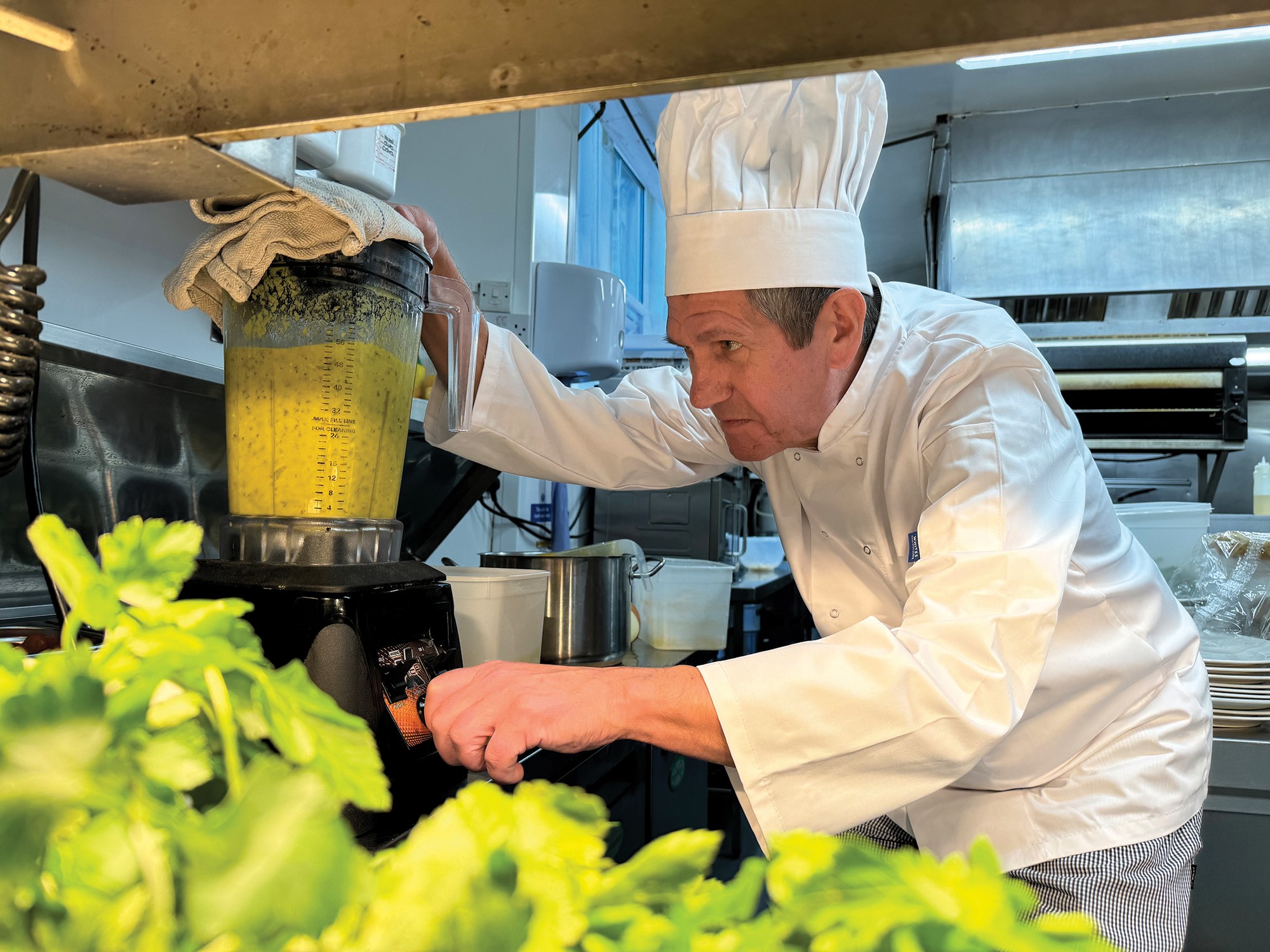During springtime the delicate white flowers of wild garlic start to emerge, carpeting the woodland floor in green and white. Merlewood in Cumbria has incredible displays of wild garlic throughout the surrounding woodland. Find out how to stay onsite by clicking here.
Favouring a similar habitat, wild garlic can often be seen growing alongside bluebells and if you head into woodland areas around the end of April you may be lucky enough to see a sea of dainty flowers.
Flavour
As well as adding a splash of interest to their shady surroundings, wild garlic is also a great ingredient to use in all sorts of recipes. It is strong and flavourful and, unlike common garlic, it is the leaves that are eaten rather than the bulbs. As part of the allium family, wild garlic is relatively similar in flavour to the chive plant.
Though all of the plant is edible it is the young leaves that have the best flavour and are perfect eaten raw – if you like a bit of a tang. Milder than conventional garlic, the leaves can be used in salads or whizzed up in dips. If it really is a mild flavour you are after then cooking considerably reduces pungency and still adds great depth to soups and sauces.

Once the plant has flowered it still has its uses. You can use the flowerheads as garnish while the seed pods are forming and as the seeds ripen the flavour will get stronger. The seeds can add quite a kick and a nice bite to green salads and pasta salads. Alternatively have a go at creating your own seasoning; dried wild garlic leaves are less strong than fresh and go well in dressings. Wash, dry in an oven (for speed and ease) and mix with salt before storing in a jar. It will keep for quite a while like this, so you can use it again and again.
Foraging
Wild garlic has large flat leaves, pointed at the tip. It is often found alongside other wild plants and its leaves are similar in appearance to Lily of the Valley, which also produces small white flowers. Lily of the Valley is poisonous however, so don't confuse the two! If you're unsure, sniff it out! Wild Garlic has a distinctive smell. You'll know it when you've got it.
Between March and June wild garlic will be abundant in deciduous British woodland and around river banks. It loves semi-shade, moist soil and will usually flower before the deciduous trees come into leaf. The stem is triangular, and produces one leaf which is large and broad. The flowerhead does not contain bulbils like field garlic does, only delicate white star-like flowers. These are pretty and edible and look great in cold dishes.

You will most likely smell the plant before you see it – the recognisable scent will fill the woodland. Remember you are not allowed to uproot a wild plant so don't dig the garlic up once you've found it, simply cut the stems and take the amount that you need. If you have found one plant, chances are there will be loads.
Responsible foraging
Remember, it's ok to pick foliage and flowers of most wild plants for your own use. But you should take small amounts from different areas, don't strip a plant. Some wild plants are protected by the Wildlife and Countryside Act.
Ideas
A great many recipes exist online for wild garlic dishes, using all parts of the plant. So there's no shortage of ideas for you to get experimenting with flavours. Rick Stein does a fantastic pan-fried monkfish which has an aromatic wild garlic coating; find the recipe here.
Stay in Cumbria, explore the woodlands and see Merlewood's display of wild garlic for yourself. Find out how by clicking the link below.



